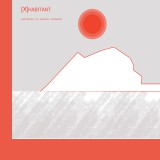The architecture of the 20th century has been influenced by the theory of the French architect Le Corbusire in the manifesto of ‘Vers une Architecture [For an Architecture] “the building is a machine inside in which we live”. But this is not true as the building does not “works”, but “behave”as they are part of a complex interaction between themselves, their occupants, and the wider climatic and environmental conditions.
Their design should aim to cover both the visible ones as well as the unmet needs of their occupants. Traditionally buildings are planned on the basis of existing needs under given circumstances environmental and other conditions. Three of the basic principles above on which their design is based are:
1. Design based on climatic conditions in the building area
2. Design based on the specific physical, social and cultural environment.
3. Design based on the desired shelf life.
People built on these principles for millennia years and have evolved into different types of housing . Buildings according to a pump are the third human skin , after the real and the clothing, which is the second. In some climatic needs are the coexistence of all three for survival and human well-being. As a rule, as extreme as possible is the inclination the more the man relies on the building to protect. Just as it is added and removed clothing, as weather and climate change (in proportion) it could also be the building itself as a third skin.
In this spirit this research project makes an analysis of the populations that live in extreme conditions , categorize them and then suggests a model which can possibly adapt to any extreme thermal climate .
